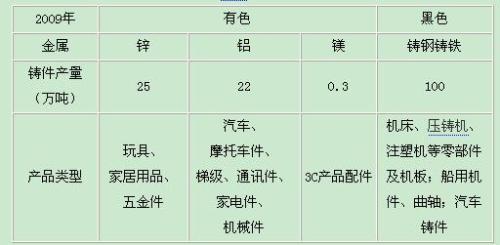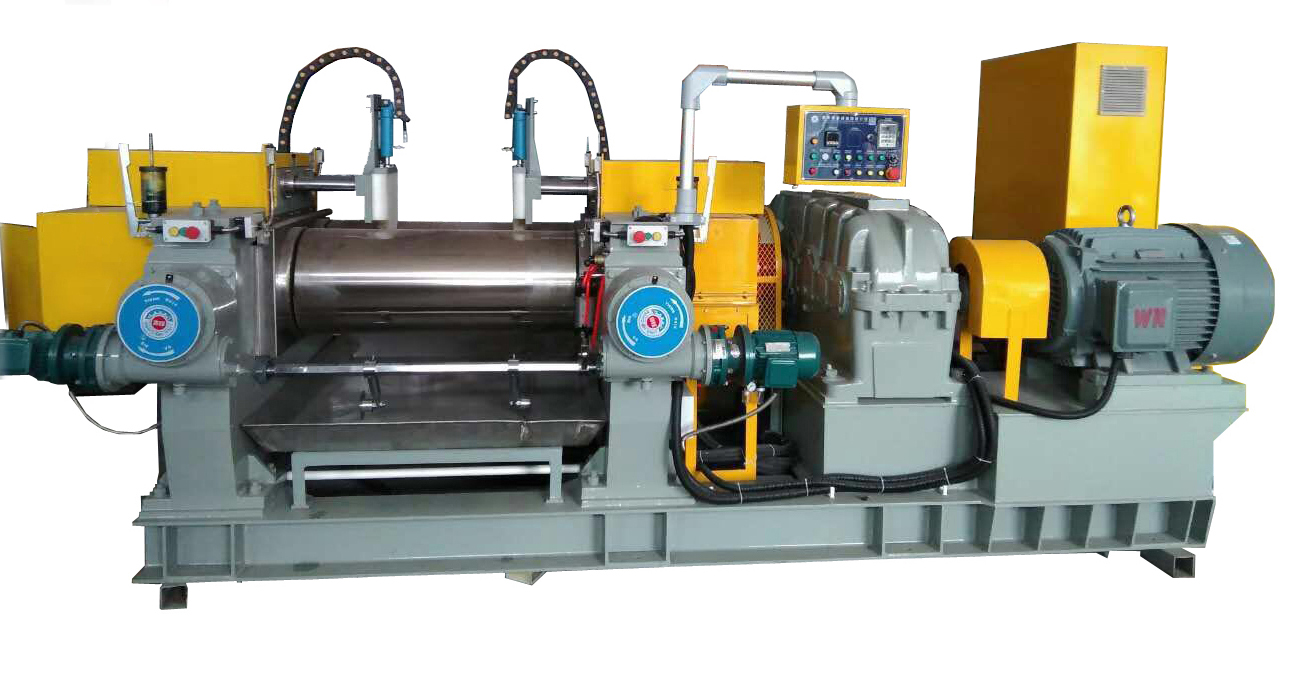LINA Mass Production Two Roll Mill
LINA Mass Production Two Roll Open Mill is designed for plasticizing, mixing and performing. And cooling system, heating system or double functions system (cooling and heating integrated) are available to meet the mixing requirements of a variety of materials. Multifunctional options and comprehensive safety devices ensure easier operation and lower maintenance rate and improve flow production efficiency.
LINA mill roller is made of high quality carbon steel, which is treated by nitriding and the surface hard chromium polished. The medium of hole roller ensures the body cool quickly and evenly, which depend on uniformity and consistency of the thickness of the sheets.
Main features:
1. Multifunctional options and comprehensive safety devices not only protect operators' security but also improve production efficiency.
2.Environment-friendly and user-friendly to reduce energy consumption and cost.
3.Intelligent PLC control system records and exports data accurately and easily, which ensures the stability of formula.
4. Instead of traditional methods to ensure user's operation safety, LINA's patented safety devices protect the user from the root of danger.
Advantage of LINA Open Milling Machine
1. LINA mass production mixing mill roller is made of high quality carbon steel, which is treated by nitriding and the surface is polished hard chromium. And the medium hole of the roller ensures the cooling efficiency.
2. The brand of LINA reducer achieves excellent transmission and long service life with less energy consumption but large torsion, the gear is made of 42 chromium-molybdenum high-rigidity material, subjected to nitridation treatment.
3. LINA two mill roll of motor-driven and speed-decreasing roll pitch regulation is not only improving the work efficiency but also making the uniformity and consistency of the thickness of the materials.
Technical Datum of LINA Mass Production Two Roll Open Mill
No.
Item
Specifications
1
Type
LN-300/12
LN-360/14
LN-400/16
LN-450/18
LN-550/22
LN-560/24
2
Roller Diameter
300mm
360mm
400mm
450mm
550mm
560mm
3
Roller face width
700mm
900mm
1000mm
1200mm
1500mm
1530mm
4
Linear Velocity of Front Roller
11r/min
12r/min
10r/min
10r/min
8r/min
8r/min
5
Velocity Ratio of Rollers
1:1.3
1:1.3
1:1.3
1:1.3
1:1.35
1:1.3
6
Maximum Roll pitch
10mm
10mm
10mm
12mm
16 mm
15mm
7
Machine Output(kg)
15-18 per time
15-25 per time
20-35 per time
30-50 per time
50-70 per time
50-70 per time
8
Motor Power
15KW
37KW
45KW
55KW
110KW
160KW
9
Total Weight
About 3000KG
About 6500KG
About 8000KG
About 10000KG
About 22000KG
About 22500KG
10
External Dimensions(mm)
3000* 1200*1100
4200* 1800*1800
4920* 1780*2100
5200* 1880*2100
6650* 2740*2100
6850* 2840*2100
Mass Production Two Roll Mill Rubber Mass Production Open Mill,Plastic Mass Production Open Mill,Mass Production Two Roll Open Mill,Rubber Seal Rings Production Line LINA Machinery Industrial Co.,Ltd , http://www.linakneader.com Analysis of Current Status of Die Casting Industry in South China . World Die Casting Industry Overview 2005 to 2010 global non-ferrous metal die casting production trends.
Analysis of Current Status of Die Casting Industry in South China . World Die Casting Industry Overview 2005 to 2010 global non-ferrous metal die casting production trends.
Production/kiloton
From the Hong Kong Productivity Council 2007.5 report “The prospects of the global and Chinese die-casting industry,†we learned that in the 2005 global die-casting product segment, automobiles and motorcycles accounted for 38%, category 3C 47%, furniture category 13%, and other 2%. .
2. Overview of Die Casting Industry in China Total Output of Die Castings in China, 2000-2009
From China Die-casting Network Song Caifei's “Summary of Die Casting Market in Chinaâ€, it is known that in the China die-casting product segment in 2008, automobile and motorcycles accounted for 63%, hardware and toys accounted for 16%, electrical and electronics 12%, and other fields 9%.
3. Overview of die-casting industry in South China Overview of the die-casting and foundry industries in the Pearl River Delta Region (Southern Guangdong and Hong Kong) in 2009 (see chart)
According to incomplete statistics, in 2009 more than 600 large-scale enterprises in South China, with an annual output of less than 500T accounted for 91%, annual output of 500 ~ 1000T accounted for 5%, annual output of 1000 ~ 3000T and annual output of 3000 ~ 5000T each accounted for 2%. According to the “China Magnesium Industry,†a strategic alliance of aluminum-magnesium light metal materials produced and researched by Guangdong Province, in 2007, the export of die-casting products in Guangdong accounted for 70% of the total output, and only 30% of the products were sold domestically.
4. SWOT Analysis Advantages of Die Casting Industry in South China: First, the die-casting industry has a good foundation, the market is more mature, and the conditions for regional cooperation are high. Secondly, the supporting industries have mature technology, especially the electroplating process. In addition, foreign-invested, Hong Kong-owned and Taiwan-funded enterprises are concentrated. With a large volume of exports, it plays an important role in the export of die-casting products throughout the country. Finally, the development of logistics and transportation industry is also a major advantage.
Disadvantages: Directly facing foreign markets, affected by the global economy, low added value of export products, small profit margins, relatively lack of labor resources in the die-casting industry, etc. are the disadvantages faced by the die-casting industry.
Opportunity: The global die-casting industry center has shifted to China. China's abundant magnesium metal resources, the growing number of companies, the soaring of the local automobile industry, the progress of die-casting technology, and the continuous expansion of downstream market sectors, all of which will bring opportunities to the die-casting industry. .
Threats: There are opportunities and threats. There are many threats faced by the die-casting industry, such as poor scale efficiency, large environmental pollution, soaring number of die-casting enterprises, vicious competition, weak awareness of independent innovation, low technical content and automation, and die-casting technology. There is a large gap in talents, the risk of a second bottom of the global economy, shrinking market demand, and so on.
5. South China die-casting industry development countermeasures government to do:
Assist enterprises to upgrade and enhance regional economic productivity: Assist enterprises with poor capacity and environmental treatment capacity to upgrade and enhance their competitiveness.
Promoting corporate synergy and strengthening the supply chain: To provide a more favorable business environment and market atmosphere for the special geographic environment of many foreign-owned enterprises in the region to promote synergies between foreign and domestic-funded enterprises, and to improve the supply chain for upstream and downstream supply chains. Industrial construction will further stabilize the regional cooperation of the entire South China die-casting industry.
Targeted training of professionals: The professional die-casting technical talents in South China are extremely scarce. The demand for talents in this field is seriously out of line with the school supply. The government should actively promote the training of professionals.
Industry to do:
The media's propaganda and guidance: Make full use of the advantages of media such as TV/newspaper/network to promote the status of the industry and enhance the image of the industry.
Closer exchanges between industry associations/academic groups, etc.: Through the activities of industry associations and related groups (such as exhibitions, academic conferences, etc.), promote the sharing of technological and managerial achievements, and strengthen regional cooperation. Optimize the integration of intellectual resources and enhance the competitiveness of regional intangible assets. Through associations and other organizations, it can promote the spread of foreign advanced production technologies in the industry. At the same time, a better understanding of the international market makes it easier to grasp industry trends.
Strengthen the integration and exchange with the international community: Through associations and other organizations drawing on the latest norms of the international die-casting industry and acting as a bridge to enhance international trade exchanges.
Businesses to do:
Strengthen independent innovation and increase product technology content and added value: increase research investment, actively participate in cooperation with schools, R&D institutions, and combine production, study and research; as the export of die-casting products in China, we should use technology and quality as breakthroughs to improve Product export profits;
Actively explore the international and domestic markets: Take full advantage of geography, logistics technology and other advantages, continue to expand exports, while also strengthening the demand for domestic market excavation, increase market share;
Take the road of scale production and strengthen regional cooperation: introduce advanced equipment and management experience. At the same time, it will expand production scale, increase the economic efficiency of enterprises, offset the impact of rising costs of resources, etc. The regional die-casting industry has a good foundation and a relatively mature development. In addition, foreign and Hong Kong and Taiwan companies with rich experience in die-casting gather here, and can therefore develop. Regional clusters;
Active defense and strengthening the ability to resist market risks: Due to the continuous impact of the global economic crisis, the die-casting market in South China bears the brunt. Enterprises should implement prudent investment strategies and diversify their investments according to different market segments to reduce risks. Actively respond to national policies and the international environment. Needed, adhere to the green sustainable development. 